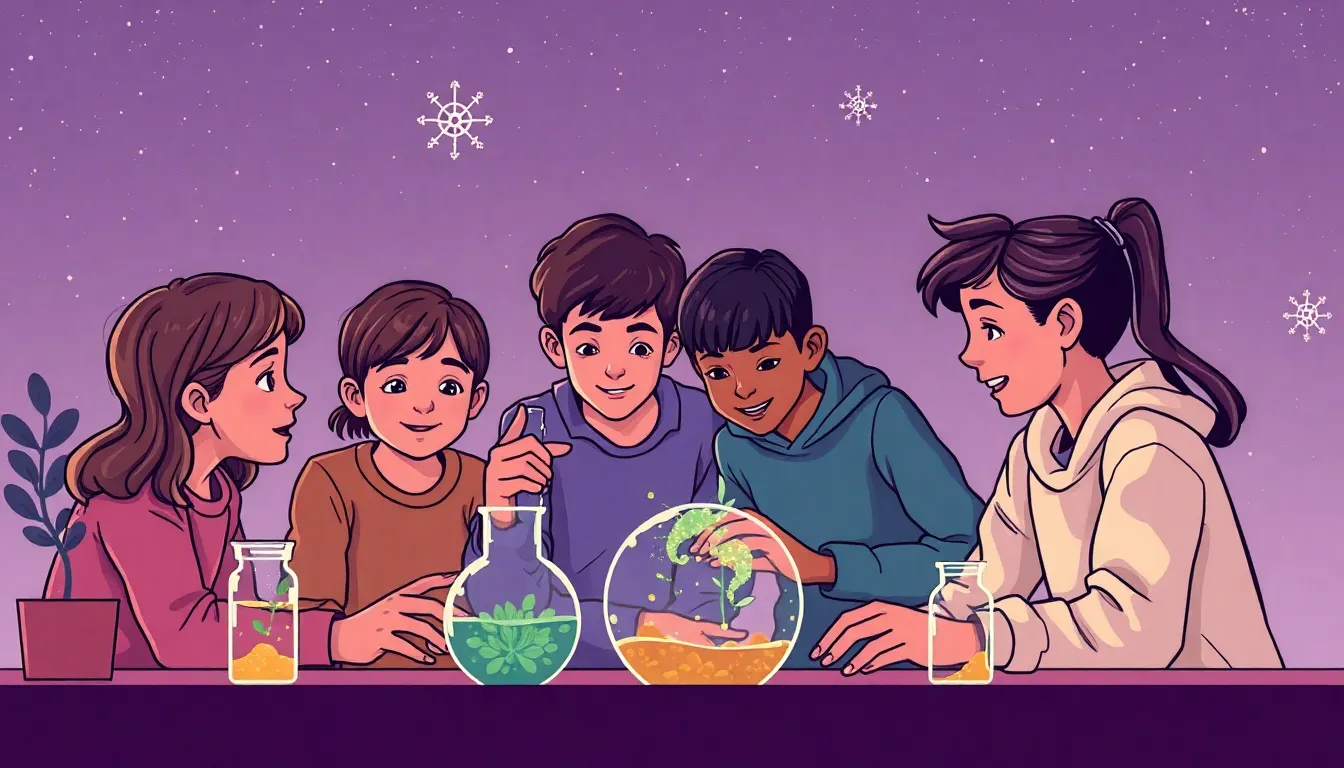
Astrobiology
Introduction
Astrobiology asks one big question: Can Life Exist Beyond Earth? It blends biology, chemistry, geology, and astronomy. By studying tiny Earth microbes that live in extreme places, we learn what life might need on other worlds.
How Scientists Search for Life
- Chemistry: Researchers recreate early‑Earth conditions in the lab. Simple gases like methane, ammonia, and water vapor can form amino acids when UV light shines on them.
- Physics: Planetary scientists model atmospheres to see if a planet can keep liquid water on its surface. Temperature, pressure, and sunlight are the key factors.
- Biology: Evolutionary biologists examine how isolated populations change over time. This helps predict how life could evolve on a moon with a hidden ocean, such as Europa.
- Biosignatures: By combining chemistry and physics, scientists identify gases (e.g., oxygen, methane) that might signal living organisms when a telescope looks at a distant planet’s atmosphere.
Missions, Careers, and Real‑world Connections
- Nasa’s Perseverance Rover drills into Martian rocks, searching for ancient organic molecules.
- Esa’s Juice Mission will fly past Jupiter’s icy moons, sampling plumes that could contain microbial life.
- Career Paths:
- Astrobiologist – studies life’s possibilities in space.
- Planetary geochemist – analyzes rocks and soils from other worlds.
- Bioinformatician – interprets genetic data from extreme Earth microbes.
- Aerospace engineer – designs spacecraft and instruments for life‑search missions.
- Getting Involved: Look for school‑based citizen‑science projects, data‑analysis contests, or summer internships at local universities or museums.
Quick Quiz & Simple Experiment
Quiz – Choose The Best Answer
-
Which gas pair most strongly hints at photosynthetic life on an exoplanet?
a) Methane & nitrogen b) Oxygen & Ozone c) Carbon dioxide & argon -
Which Earth environment best mirrors Europa’s hidden ocean?
a) Sahara desert b) Deep‑sea Hydrothermal Vents c) Alpine tundra
Experiment – Simulate A Tiny Prebiotic Reaction
- In a clean, sealable jar, mix 2 tablespoons of vinegar (acetic acid) with a pinch of table salt.
- Place the jar in direct sunlight for three days.
- Observe any color change or cloudiness.
What’s happening? UV light can drive simple chemical reactions, turning basic ingredients into more complex organic molecules—much like early Earth chemistry. Write down what you see, suggest a possible reaction, and compare notes with classmates.
Takeaway: Astrobiology shows how life, chemistry, and planets are linked across the universe. By exploring extreme Earth habitats, studying distant worlds, and joining real missions, you can help answer the timeless question: Are We Alone?